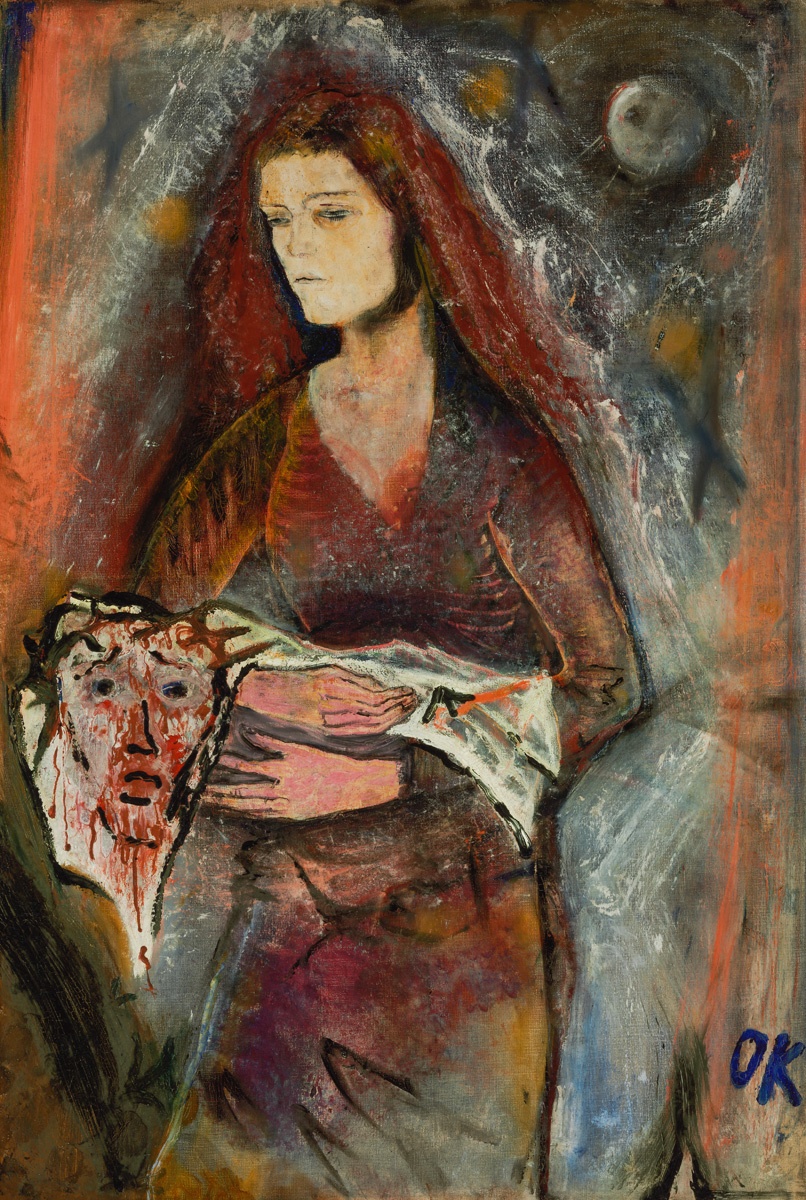Also known as a poet and dramatist, Oskar Kokoschka was a pupil of one of the most famous figures of the Secession, Gustav Klimt. In contrast to earlier traditions, Kokoschka sought not a naturalistic representation of reality, but the psychological exploration of the inner self. His dramatic portraits, which focused on the mapping of the soul, made him one of the authorities of German Expressionism.Veronica’s Veil is both his first sacred painting and also one of the key works of his early oeuvre, which he referred to as the "religious picture closest to my heart". Apocryphal sacred texts relate how Veronica, a woman of Jerusalem, with her shawl wiped the blood and sweat from Christ’s face on the way to Calvary; this shawl then miraculously preserved the image of the Saviour’s face. Her white-hot angular face radiates melancholy, and the gesture with which her long fingers gently and protectively embosoms the blood-soaked shawl can be traced back to the tradition of Madonnas nursing the Child, or lamenting the dead Christ. Her figure is bathed in a cone of light. The full moon behind, a symbol of femininity, hints at Alma Mahler, the widow of composer Gustav Mahler, with whom the painter had a brief but passionate love affair. But the idea of the picture can perhaps be derived from an even more profane episode in his life: according to Kokoschka’s memoirs, when the picture was made, his atelier windows were being cleaned by the concierge’s daughter Veronica. Márton Orosz
en

